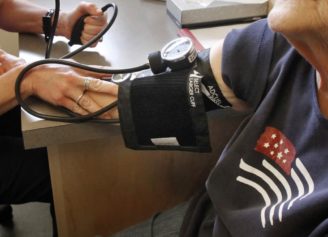About one-third of Americans have hypertension or high blood pressure, and this disease is responsible for about 7.5 million deaths worldwide each year.
However in the Southeastern region of the country, the number jumps to more than half living with high blood pressure. Thus the risk of complications is also much higher, mainly — strokes. The Bible Belt to health officials is known as “the stroke belt.”
A recent study looked at 69,000 Black and white Americans who lived in the Southern states between 2002 and 2009 and had a similar income and educational backgrounds and found that about 57 percent had hypertension. Black and white men at 51 percent each had high blood pressure, but there was a wider gap between Black women and white women, at 64 percent and 52 percent respectively.
One of the authors of the study, Dr. Uchechukwu K. A. Sampson, an assistant professor of medicine at Vanderbilt University Medical Center in Nashville, said the United States has had the same treatment for high blood pressure since 1977, but the rates in the South have stayed the same. The study reaffirms most of what scientists and doctors already know: the rates are high, but not enough is being done about it.
Some risks for hypertension include: family history, diabetes, cholesterol, and notably, obesity.
“Are they still the same factors people have found before?” Sampson told Reuters. “If they are, that is bad news, then that means we have not done what we should have done in the past few years.
Hypertension is asymptomatic, meaning there aren’t “obvious” clues or signs that someone may be ill, but it can lead to stroke or kidney damage if left untreated. Thus, regular screenings are encouraged.
“Patients, be more proactive in monitoring your blood pressure,” said Sampson. “Physicians should be much more proactive as well.”
According to the National Stroke Association’s website, there are two categories for the different risk factors for stroke: controllable and uncontrollable. Uncontrollable factors include: age, race, gender and family history and controllable factors are high blood pressure, cholesterol, diabetes, physical inactivity, alcohol and tobacco use, and obesity. The association encourages patients to change their lifestyle to decrease their risk of stroke and to treat their medical risks by working with their doctors.
S.C. Rhyne is a blogger and novelist in New York City. Follow the author on twitter @ReporterandGirl or on Facebook and visit her website at www.SCRhyne.com


